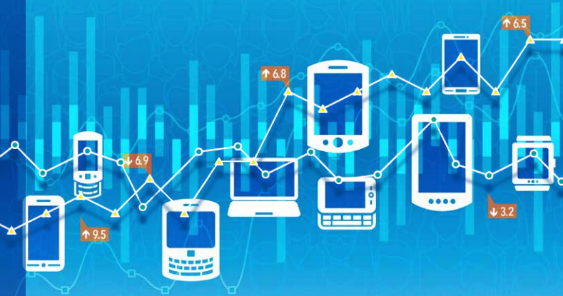Summary of key findings regarding the Philippines drawn from the ITU’s Measuring the Information Society Report 2017
Mobile cellular, and mobile and fixed broadband services in the Philippines have become more affordable in recent years and also compare favorably with prices in other Asia Pacific countries and the rest of the world, according to the latest report released by the International Telecommunication Union (ITU), the United Nations agency that coordinates telecommunication operations and services throughout the world.
Mobile data prices in the country for example fell nearly 70% from 2015 to 2016 as mobile operators pushed mobile broadband services more aggressively, the ITU report noted.
The ITU’s “Measuring the Information Society 2017” report calculates, among others, prices of telecommunications services as a percentage of a country’s gross national income per capita (GNI pc) per month. GNI measures income received by a country both domestically and from overseas. GNI per capita is gross national income divided by population. By this measure, Philippine cellular and broadband prices have become more reasonably priced.
According to the two-volume report, the Philippines’ mobile cellular prices (defined as the average cost of 100 SMS and 30 mobile calls per month) are 3.2% of the country’s average monthly GNI per capita in 2016, down from 3.42% the previous year. The 2016 figure is also at par with the Asia and the Pacific region’s average of 3.2% and well below the world average of 5.2%.
The ITU report also said that fixed broadband prices (monthly subscription to an entry-level fixed-broadband plan, based on a monthly data usage of 1 GB minimum) are at 7.1% of GNI per capita, down from 7.53% in 2015. This figure is well below the regional average of 14.5% and the global average of 13.9%.
Mobile broadband prices for 500 MB and 1GB worth of data, on the other hand, each make up 2.1% of the GNI per capita. Both figures are lower than the Asia Pacific averages of 2.7% and 5.4% respectively, and the world averages of 3.7% and 6.8%, respectively.
Between 2015 and 2016, mobile-broadband services for 1GB data in particular have become more affordable, dropping by 4.64-percentage-points from 6.74% to 2.1%.
Key Indicators | Averages (2016) |
| |||
(% of GNI pc) | PH | Asia & Pacific | World | Indonesia | vs PH 2015 |
Mobile-cellular prices | 3.2 | 3.2 | 5.2 | 3.3 | 3.42 |
Fixed-broadband prices | 7.1 | 14.5 | 13.9 | 10.6 | 7.53 |
Mobile-broadband prices 1GB | 2.1 | 5.4 | 6.8 | 2.0 | 6.74 |
Put another way, this means that for every P100 in monthly GNI, every Filipino spends only P3.20 in mobile-cellular services, P7.10 in fixed broadband services, and P2.10 for either 500MB or 1GB data in mobile-broadband.
As of 2016, GNI per capita in the Philippines is at $3,580, which is comparable to neighbor Indonesia’s $3,400 for the same year.
Compared to Indonesia, which is also an archipelagic country, the Philippines’ mobile-cellular and fixed-broadband prices as percentage of GNI per capita are more affordable than Indonesia’s 3.3% and 10.6%, respectively, while mobile-broadband prices for 1GB data in the two countries are almost the same (2.1% vs 2%).
Steady improvements in ICT
The ITU report also included the ICT Development Index (IDI), which ranks the performance of 176 economies with regard to ICT infrastructure, use and skills by combining 11 ICT indicators under these three sub-indices. Infrastructure and access indicators include fixed telephone and mobile cellular subscriptions, international internet bandwidth per internet user, percentage of households with computers and percentage of households with internet access. Use indicators, on the other hand, include percentage of individuals using the internet, fixed-broadband subscriptions and active mobile-broadband subscriptions. Lastly, skills indicators include mean years of schooling, secondary gross enrolment ratio and tertiary gross enrolment ratio.
As of 2016, the Philippines’ IDI ranked 101st out 176, one notch lower than the previous year’s. Despite slipping in worldwide rankings, however, the Philippines’ IDI scores have improved between 2015 and 2016, ITU also noted.
The Philippines’ scores have improved across all sub-indices, with notable improvements in fixed-telephone subscriptions per 100 inhabitants (from 3.2 in 2015 to 3.7 in 2016) and international internet bandwidth per internet user (from 28.4 kbit/s to 43.4 kbit/s).
The country’s proportion of households with computers also inched up from 32.5% to 34%, while the proportion of households with internet access also increased from 36.1% to 39.1%.
The Philippines has “achieved a high level of GSM mobile coverage, with most ICT services provided in a duopoly environment,” ITU said in its country profile for the Philippines.
The country’s 3G coverage includes 93% of the population—a figure larger than the regional average of 87.6% and the world average of 85%.
LTE or 4G/Wimax services, on the other hand, cover 80% of the Philippine population according to ITU figures—also above the regional average of 73.6% and the world average of 66.5%.
“Despite having a largely duopoly market, the country has achieved a high level of basic mobile access and has deployed the latest wireless and fixed technologies with high download speeds, at least in urban areas. It is also well endowed with international Internet bandwidth driven by its large overseas population and burgeoning business process outsourcing industry,” it concluded.










